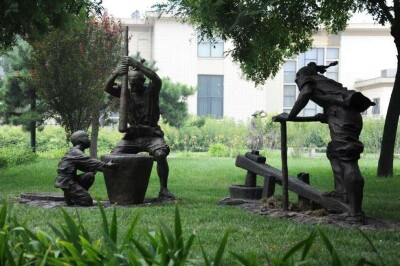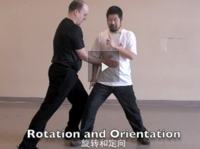In China, old can mean a few thousand years, can also mean less than a hundred years.
The traditional way of milling grain into a flour form in most of northern China was several types of mills. The video below is a family grain mortar called 碓, Dui, Mortar. This word 碓 is the identical to the 碓 in 金刚捣碓 Buddha’s Warrior Attendant Pounds Mortar. This type of devices were commonly used when I grew up in the 1960s in northern China.
The reason I talk about this is because this is the type of background information we need today to understand how taiji were created, practiced and used in China in the past. If we don’t relate to the background of the art, we will have a hard time “really” understanding it.
In this video, you will see an inefficient lever device that produces an efficient “pounding” action.
In our Chen Style Taijiquan Practical Method system, this type of action is present throughout the routines.
![]()




{ 3 comments… read them below or add one }
I notice that the power arm is short while the hitting arm is long. This allows the person to use a small step, but it takes quite a bit of effort, to create a large potential at the hitting arm and let gravity effectively pound.
It reminded me of some notes about lever from 2018 North American Training Camp.
Lever
If the pivot is far from the rear foot (close to the opponent)
Pro: Small amount of power on the rear side can move the opponent
Con: Since the pivot is close to the oponent, it is easier for the opponent to disrupt it
If the pivot is close to the rear foot (far from the opponent)
Pro: It is like you have a long pole and your power starts far from the opponent, and the opponent can’t easily disrupt it
Con: It is harder to maintain the integrity of the lever system. As power is applied, the opponent side of the stick can easily fall apart
This grain mortar is an example of the latter case.
The action of Buddha Warrior is more similar ti the action reflected un the sculpture to the left (rather than the right) in the photo (photo “Dao Dui”above). The pestle is long and lifted up before being pounded down in repeated actions (with both hands or alternately left then right hand).
The picture of Dui with pestle = 杵 and Mortar= 碓 is more a direct illustration of the action of Buddha’s Warrior Attendant Pounds Mortar.
The picture to the right of the device is more an usable application. It is based on the concept of a level which is the corn concept of Practical Method.
In the same way, when we talk about theory, we say that the entire form is made up of either positive circles or negative circles. In reality, they are egg-shaped actions, not circles. And there are no complete egg shaped moves either. Only partial movements.